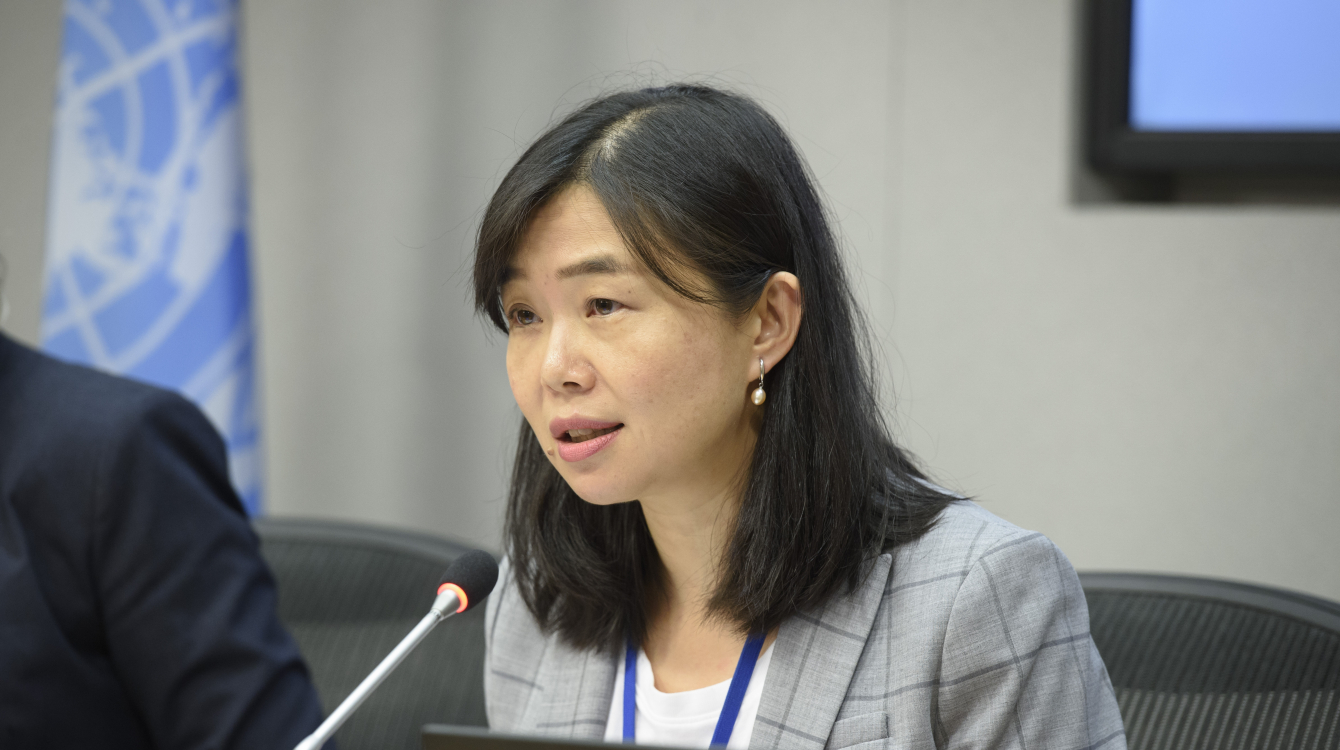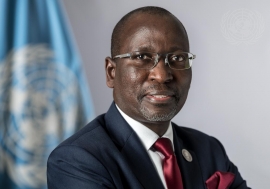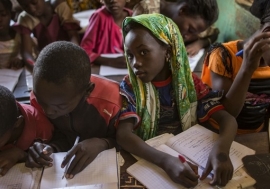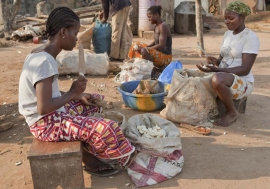Over the past two decades, Africa has made remarkable progress in many development areas. There have been substantial declines in maternal and child deaths, steady decreases in the incidence rates of HIV, malaria, and tuberculosis, considerable progress in primary school enrolment and youth literacy, and improvement in women’s participation in politics.
However, the region also faces daunting challenges, with rapid growth of population, high levels of poverty and hunger, and armed conflicts, all of which make the implementation of the broad and ambitious 2030 Agenda for Sustainable Development in the region particularly difficult.
Since March 2020, the COVID-19 pandemic has wreaked havoc on people’s lives and livelihoods across the globe. Although the rates of COVID-19 infection in Africa are not as high as in other regions, the economic downturn and social disruption caused by the pandemic is damaging decades of development gains made in the continent.
This article reveals some of the devastating impacts of the crisis on the implementation of the SDGs in Africa using the latest available data and estimates from the recently-released The Sustainable Development Goals Report 2021 and the Global SDG Indicators Database.
COVID-19 has caused a sharp deterioration of livelihoods in Africa
SDG 1 – The proportion of people living in extreme poverty in sub-Saharan Africa decreased from 59% in 2000 to 41% in 2018, but progress had been stalled since 2015.
Due to rapid population growth, the number of extreme poor in the region has increased in the last two decades, to an estimated 439 million in 2019, which is more than two-thirds of the world’s extreme poor.
Although the number of poor was already projected to increase in 2020 and 2021, the COVID-19 pandemic is estimated to double the already deteriorating rate and will push an additional 30 million people into extreme poverty in the region.

SDG 2 – Even before the pandemic, the share of the population suffering from hunger and food insecurity had been rising in Africa since 2014. COVID-19 is pushing these rising rates even higher.
In 2020, one in five people was facing hunger in Africa, about 46 million more people when compared with 2019. Nearly 60% of the African population—799 million people—were affected by moderate or severe food insecurity in 2020.

SDG 3 – In the past two decades, Africa has made significant progress in many health areas, including improving maternal and child health, and combating HIV, malaria, and TB. For example, HIV incidence among adults (aged 15 to 49 years) declined by 47% in sub-Saharan Africa between 2010 and 2019.
However, the region continues to shoulder the heaviest health burden and has the weakest health infrastructure in the world. In 2019, the region accounted for 94% of all malaria cases (215 million cases).
The density of nursing and midwifery personnel in sub-Saharan Africa is 10 per 10,000 people, less than one-fifteenth of that in Northern America. About 90% of countries in the world are reporting one or more disruptions to essential health services due to the pandemic. Even moderate disruptions in access to treatment could lead to a considerable loss of life.
For example, a 10% disruption in access to effective antimalarial treatment in sub-Saharan Africa could lead to 19,000 additional deaths in the region. In the second week of July, Africa recorded a 43% week-on-week rise in COVID-19 deaths.
However, vast inequities exist in vaccine distribution: as of 17 June 2021, around 68 vaccines were administered for every 100 people in Europe and Northern America compared with fewer than 2 in sub-Saharan Africa.
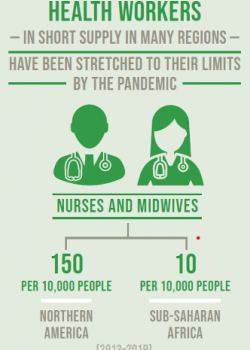
SDG 4 – Sub-Saharan Africa has the lowest learning proficiency and the highest rate of out-of-school children. While primary completion has continued to improve slowly but steadily, from 46% in 2000 to 62% in 2019, the secondary completion rate has only increased from 18% to 25% in this period.
The COVID-19 pandemic is projected to cause an additional 6 million children in grades 1-8 in the region to fall below the minimum reading proficiency threshold, increasing the share of students falling behind to 85% in 2020. School closures and the economic downturn caused by COVID-19 has increased rates of violence against children, child labour, child marriage, and early pregnancies.
SDG 5 –Women in the region are gaining more power in politics. The proportion of seats held by women in single or lower houses of national parliament increased from 18.4% in 2010 to 25% in 2015. The biggest gain in women’s representation during the last 20 years have been made in Rwanda, with 61.3% of seats held by women in single or lower houses of national parliament.
The social and economic impacts of the COVID-19 pandemic have adversely affected progress towards gender equality.
Violence against women and girls has intensified; child marriage is expected to increase; and women have suffered a disproportionate share of job losses and increased care work at home.
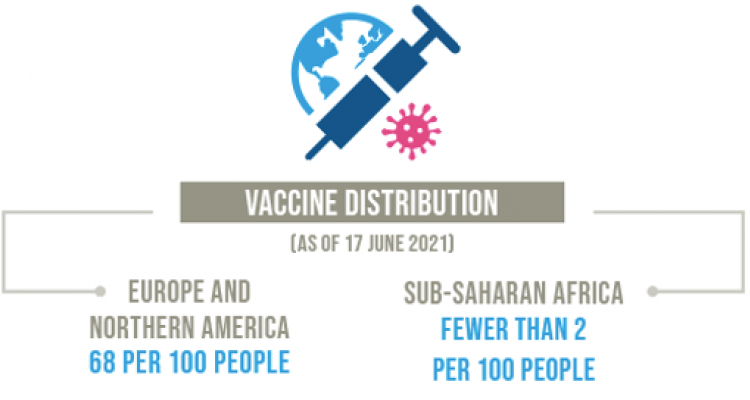
SDG 7 – Among the 759 million world’s people without electricity in 2019, three-quarters of them lived in sub‑Saharan Africa.
The number of people without electricity in Africa increased in 2020 after steadily declining since 2013, pushing many countries farther away from achieving the goal of universal access by 2030.
SDG 8 – Informal employment represented 85% of total employment in sub-Saharan Africa. These workers have been significantly affected by the lockdown measures, due to lack of access to social safety nets. They face a high risk of falling into poverty and will experience greater challenges in regaining their livelihoods during the recovery.
Climate change, environmental deterioration, and conflicts continue to impede sustainable development efforts
SDGs 12-15 – Despite a pandemic-related economic slowdown, the climate crisis continues largely unabated. Climate change is one of the major contributing factors to increased hunger and forced displacement in Africa.
More than one-fifth of the land area in Africa is degraded. Over 70% of people living in sub-Saharan Africa depend on forests and woodlands for their livelihoods, yet Africa had the largest annual rate of net forest loss from 2010–2020, at 3.9 million hectares.
Land and environmental degradation have threatened Africa’s development, undermining the well-being of millions of people, driving species to extinction (half of African birds and mammals facing extinction by the end of 2100), and intensifying climate change.
SDG 16 – Conflicts between states and armed groups, and attacks on civilians have continued or escalated in most parts of sub-Saharan Africa.
Without doubt, the COVID-19 crisis makes achieving the SDGs much harder. However, the crisis gives us a true opportunity to map a different course.
Between 2015 and 2020, the annual number of civilian deaths globally decreased by 61%, but in sub-Saharan Africa, civilian deaths in conflicts increased by 66%. Countries from sub-Saharan Africa have the highest average prevalence rate of bribery.
On average, more than one in four people who had contact with public officials in the region paid a bribe or were asked to pay a bribe.
Conflicts, corruption and COVID-19 are compounding the development challenges for many African countries.
Yet, Africa can build back better if a transformative pathway is taken
Africa’s quick response to COVID-19 has been praised as an effective campaign to combat the spread of COVID-19. As of 16 July 2021, Africa had recorded about 106,000 deaths, compared with over 1,950,000 in the Americas, and over 1,200,00 in Europe. Between 1 February 2020 and 10 May 2021, 51 African countries introduced 238 social protection measures in response to COVID-19 crisis, including health and food security measures, unemployment protection, income protection, and housing and special allowances.
Without doubt, the COVID-19 crisis makes achieving the SDGs much harder. However, the crisis gives us a true opportunity to map a different course, one that recognizes the deep fissures in the current direction and integrates solutions to combat parallel environmental, social and economic crises. The SDGs and the Paris Climate Agreement offer us the blueprints to guide the way. The first step to recovery and build back better is to ensure equitable access to COVID-19 vaccines and treatments. Countries in the region have struggled to get vaccine supplies. Vaccination rates remain low compared with the rest of the world, with less than 2% of Africa’s population is fully vaccinated. The supply of COVID vaccines to Africa has improved in recent weeks after stagnating for more than two months.
In addition, building on past successes and leveraging the world’s largest free trade area, African countries can seize the opportunity to move more quickly on reforms and investments that will be crucial for a sustained recovery and long-term sustainable development.
Ms. Yongyi Min is the Chief of Sustainable Development Goal Monitoring Section at the UN Department of Economic and Social Development’s (UN DESA) Statistics Division.


